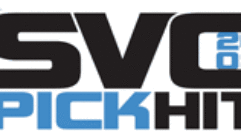
2008 Pick Hit Award Winners
Aug 21, 2008 11:28 AM,
By Trevor Boyer
Related Articles
InfoComm 08 in Review

At InfoComm 08—as with any tradeshow—technological innovations generated the bulk of the buzz on the show floor. But with so much to see, and so much misplaced hype, it’s easy to forget what was introduced last year in a different package—or to miss the truly revolutionary little I/O box. Every year at InfoComm, SVC sends its editors and contributors in search of the truly groundbreaking. Our judges award products that represent a major technological breakthrough and promise to serve as a powerful, useful tool in the professional lives of our readers.
This year, our list of Pick Hit winners reflects a mature industry. It’s not the loudspeakers that are evolving quickly; it’s the way we monitor and control them. The displays are no longer getting much bigger or brighter, but there are revolutionary changes afoot in the way images can now reach them.
At InfoComm, our judges Bennett Liles, Michael Goldman, Jeff Sauer, Trevor Boyer, and Jessaca Gutierrez scoured the show floor at the Las Vegas Convention Center in search of worthy products. What follows are the results of hours of chatting with product managers, research, and deliberation. Thanks to our judges and congratulations to all the 2008 winners of SVC‘s Pick Hit Awards.
Sanyo LP-XP200L
Described as “the world’s first 4LCD projector,” the Sanyo LP-XP200L actually contains three 1.3in. XGA-resolution LCD panels for red, green, and blue—just as conventional 3LCD models have. The twist here is the fourth panel. Situated behind the green panel, the Color Control Device panel is designed to make colors more vivid, and it independently controls the yellow output. The projector is a bright 7000 lumens and contrast is rated at 2200:1.
Hitachi CP-A100 projector and FXDuo-77
Short-throw whiteboard can be a boon to classrooms and boardrooms. “Anywhere anyone needs to stand up and wave their arms in front of information,” according to Pick Hits judge Jeff Sauer. At InfoComm, Hitachi was showing its CP-A100 projector combined in a package with a wall-arm mount and the StarBoard FX-Duo-77, a 77in. interactive whiteboard that two users can manipulate simultaneously using their fingers. The CP-A100 is mounted at such an angle that shadows don’t interfere with the image. The XGA-resolution projector offers 2,500 lumens of brightness, and it can throw a 60in. image from only 1.5ft. away.
ProjectionDesign F10 AS3D
The F10 AS3D projector allows stereoscopic 3D projection from a single-lens, dual-head chassis. If that’s not exciting, then you haven’t been paying attention to the recent surge of advances in stereoscopic technology. The single-DLP projector has a color wheel with five elements in 2D mode. The wheel splits it into two 2.5-element sections for stereoscopic projection. With a resolution of 1400×1050, the F10 AS3D has two each of DVI-D, DVI-A, and VGA connections for dual-head input.
Da-Lite 3D Virtual Black screen
Speaking of stereoscopic 3D projection technology, Da-Lite introduced what it describes as the first screen material designed for rear projection of 3D content. The secret to the screen’s success is the way it preserves image polarization, and that’s thanks to breakthroughs by Da-Lite’s research chemists. Da-Lite claims that by maintaining 99-percent polarization purity, the screen virtually eliminates stereoscopic cross-talk or ghosting. The 3D Virtual Black screen is 16ft. high and can be cut to any width.
Sharp XG-P560W
At last year’s InfoComm, Texas Instruments introduced its .7 XGA three-chip DMD, essentially promising that affordable 3DLP projection was just around the corner. This year, Sharp made good on that promise by introducing its XG-P560W, which incorporates those chips and is expected to sell for about $15,000. That’s small price to pay for the color accuracy that three DLP panels enable. The 1280×800 projector features 5200 ANSI lumens of brightness and a contrast ratio reported at 1800:1.
Canon WUX10
Another projector that breaks new ground in price/performance is Canon’s new WUX10, a LCoS projector with a very high 1920×1200 resolution that allows pixel-for-pixel display of 1080i video and all but the highest-resolution computer desktops. A single .71in. panel enables that WUXGA resolution, the highest of any LCoS projector so far. The WUX10, expected to retail for about $12,000, offers 3200 lumens of brightness.
Westinghouse Digital M470SWP Digital Signage Solution
“‘Here’s another display manufacturer trying to make digital signage software,’ is what I first thought,” Sauer says. “But it’s the first one that looks like a usable piece of software.” Westinghouse Digital indeed developed simple-to-use digital-signage authoring software, and now includes it with its 1920×1080 42in. or 47in. LCD displays and a set-top box with 160GB of storage. The system allows small-business owners to combine HD movies, animations, text, graphics, and live TV/video into a single frame. The drag-and-drop software features templates for easy screen layout, and users can easily set start times and duration to create a content wheel of video and banner ads.
InFocus IN3100 series
The two projectors in the IN3100 series are the first to feature DisplayLink, a technology OEM’d from the company of the same name. DisplayLink involves a mini-USB connection that allows users in a meeting-room environment to plug in and unplug their laptops with ease. “Rather than a VGA cable, you’re using a USB connection to send images to the projector,” Sauer says. “The advantage to that is it’s a lot quicker in terms of setup.” Most projectors have a USB port for a thumb drive to load a presentation, but DisplayLink lets you plug in a computer, allowing the IN3100 projector to take over the graphics engine. The InFocus IN3100 series includes XGA- and WXGA-resolution projectors with 3000-3500 lumens of brightness.
Extron GlobalViewer Enterprise
GlobalViewer software is not new; Extron’s software allows users to monitor, via a web browser, the status of audiovisual gear throughout a building. But until now, building managers have needed to step through individual webpages for each room. With a completely revamped user interface, Extron’s new Enterprise edition eliminates that problem, allowing users to see at a glance what’s going on within a whole building. “I’ve been camping out Extron’s door for about two years trying to get them to do that,” Pick Hits judge Bennett Liles joked. What makes GlobalViewer Enterprise unique is its universality; it works with third-party facility scheduling software and integrates control systems from AMX and Crestron.
FiberPlex LightViper Shadow
Route audio, video, intercom, and RS-422/232/485 control data over the same fiber with FiberPlex’s LightViper Shadow fiber-optic transport system. The 2.5GHz system handles up to 128 channels of composite video, audio, and control, or up to 256 bidirectional channels of audio. The Shadow adjusts timing and every other necessary parameter in order to connect to any audio source, regardless of its sampling rate. “You just plug it in and it auto-adjusts to whatever’s on that input and sends it down one fiber,” Liles says.
Sansonic Wired HNB
Sansonic’s new Wired HNB modules extend audio and video output connectivity to a classroom or other small rooms using familiar 4″x4″ two-gang wall boxes that can be installed with standard mounting hardware. Sansonic has offered intercom and alarm modules at previous InfoComm shows, but modules for composite video, wireless mics, and infrared control are new this year. That last new module acts like an IR receiver, allowing a teacher to adjust room volume with a remote. The new modules extend the HNB system’s ease of installation and ease of use to a much wider variety of applications.
Rane Mongoose
To users, Mongoose’s lightswitch-style wall mounts can take anything familiar—XLR or RCA; mic inputs with preamps, or line inputs. Then the magic happens: This remote audio CobraNet interface makes the conversion to CobraNet at the wall. “It runs Cat-5 or Cat-6 behind the scenes everywhere to a central unit,” Liles says, “then handles your routing through Cobranet.” The central Mongoose unit, a 32×32 digital audio matrix, is configured visually via Tracker software—a “crossword-puzzle” grid to connect inputs to outputs.
Avocent Emerge MPX HD Multipoint Extender
Avocent’s new MPX HD system executes the wireless transmission of HD video or computer graphics from one source to up to eight displays that are up to 1,000ft. away. The concept is as simple as the technology breakthrough is impressive. For ease of setup, the MPX1500 transmitter and receiver boxes each feature a universal media port based on DVI-I, which allows for the extension of digital and analog video formats including DVI-D, HDMI, DVI-A, RGBHV, or YPbPr signals (with embedded and unbalanced audio support, of course).










